SIPs Technical and Frequently Asked Questions
Sap 10 future homes standard 2025 low thermal mass
The use of SIPs now has a proven track record in the delivery of high performance, thermally efficient dwellings. Historically this was advantageous for our self-build clients that wanted to exceed regulations to drive down energy bills in their forever homes.
However, with regulations under Part L and SAP 10 becoming increasingly stringent the use of SIPs removes variables and provides a streamlined route to compliance for all.
Q&A’s
Why do SIPs systems make this process easier for the client?
As building regulations continue to become more stringent, especially with amendments to Part L and now SAP10 as we move toward the 2025 future homes standard, the use of SIPs has huge benefits to all to ensure that compliance is achieved.
Being able to guarantee U values, provide thermal bridging details and help toward ensuring air pressure test results at early design stage allows all clients to accurately cost for the overall energy performance of their build or development.
Using back stop U values, Accredited Construction Details (ACD’s) and default Thermal Bridging (PSI) Values is no longer compliant so ensuring the overall energy performance of the build is achieving your requirements at the earliest stage is the best way to avoid further costs and delays to projects.
Can you expand on this regarding the U values, air pressure tests and thermal bridging – are your SIP panels compliant with current U Value Requirements?
All projects must achieve certain U values to comply with current regulations. This is currently 0.18 in walls and 0.11 in the roof when looking at the target fabric energy efficiency of a dwelling.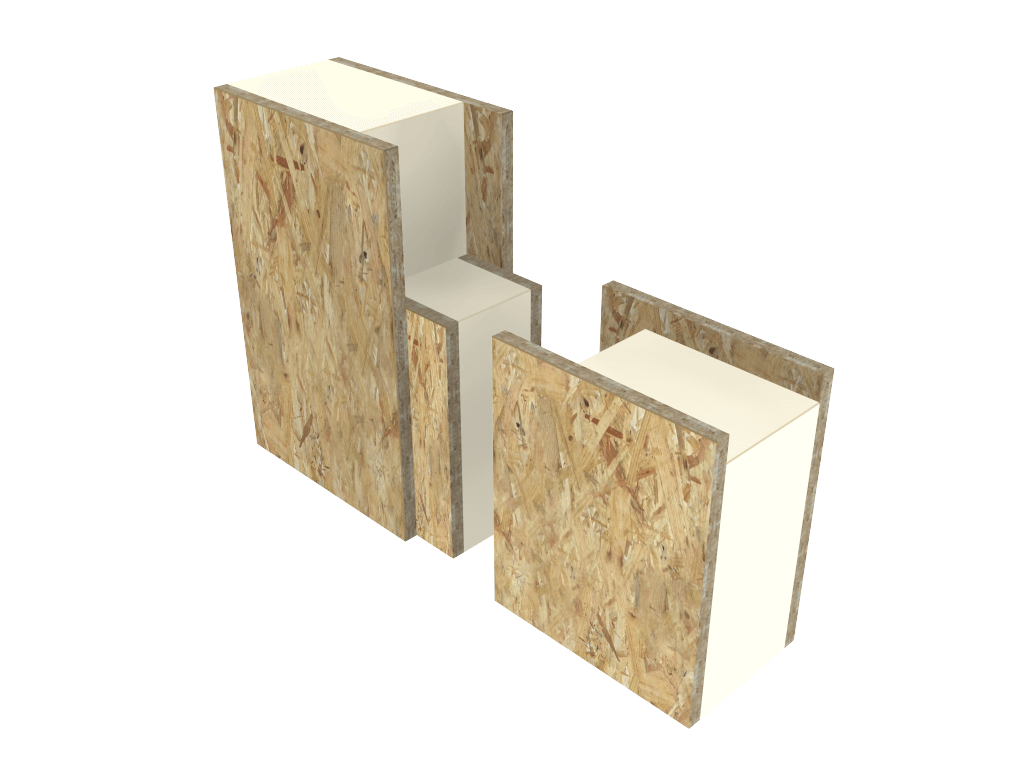
However, depending on how the project is performing overall when considering additional measures such as Solar PV, Air Source heat pumps and MVHR it may be that the roof can be delivered at 0.13. Again, early modelling of the dwelling helps to confirm this which again shows the commercial advantage to having this done.
With our SIP systems we can complete U value calculations at the earliest possible stage to ensure we are achieving the required targets. With our SIP systems we are achieving these targets with the thinnest overall construction depths possible which maximises habitable or rentable space internally for the client.
Our range of SIP panels provide options as low as 0.11 in wall applications and 0.13 in roof applications depending on a project’s external finishes. SIP Panel Range
Along with U values, what is the importance of the Air Pressure testing?
There is no point delivering fantastic U values with poor air pressure test results! SIPs systems are inherently airtight given the accuracy of design, manufacture and install so our systems will often exceed current air pressure test requirements without additional measures. Obviously follow on trades must ensure they are sealing appropriately too around any penetrations made!
A significant change to the new regulations is that all plots on multiple unit developments must be air tested – even if they are the same house type. For developers, the worry of how each dwelling will perform can be eliminated when using SIPs which again reduces variables and potential costs if additional measures are needed due failed air pressure tests.
Our SIP systems also have minimal shrinkage and settlement in comparison to standard timber frame so this ensures air pressure test results are maintained through the lifetime of the building. This combined with reduced timber content in external walls also ensures that thermal bridging is kept to a minimum.
This leads nicely onto thermal bridging – what has changed under new regulations?
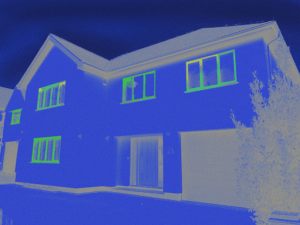 Default PSI values can no longer be used as this has a negative impact on fabric energy efficiency results, often leading to failure to comply.
Default PSI values can no longer be used as this has a negative impact on fabric energy efficiency results, often leading to failure to comply.
Our SIP systems are complete with Pre calculated PSI values that can be sent to your SAP assessor along with the U value calculations we complete for you so the building fabric can be modelled at the earliest possible stage. This can then help to determine how your other potential measures such as MVHR, Solar PV, UFH and Air Source Heat Pumps will be incorporated.
This has certainly made the target fabric energy efficiency of the building a vital step in achieving SAP10 compliance.
Absolutely. The majority of our clients are looking to deliver thermally efficient, sustainable systems on time and on budget.
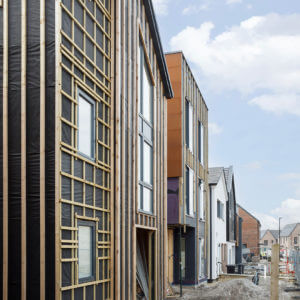 When you combine the predictability of cost, program time and thermally efficiency of our systems we are ultimately part of the process in providing our clients with a streamlined route to compliance at the earliest possible stage which further reduces variables and risk whilst on site.
When you combine the predictability of cost, program time and thermally efficiency of our systems we are ultimately part of the process in providing our clients with a streamlined route to compliance at the earliest possible stage which further reduces variables and risk whilst on site.
The ability to ensure that a building will achieve the required energy ratings whilst still in design stage allows for all additional measures such as MVHR, UFH and Solar PV to be factored into the design and engineering process of our SIPs system.
As building regulations become more onerous under Part L and SAP10 and the demand for responsibly sourced, sustainable systems increases our BBA approved SIP panels and Structural Timber Association Gold standard certification ensures we are perfectly placed to meet the demands of our growing client base.
Do SIPs affect how we design for overheating compliance under Part O?
Absolutely—and in a positive way. SIPs can actively support compliance with Part O of the Building Regulations, which is all about limiting unwanted solar gain and managing overheating risk in new homes.
Here’s how SIPs give your project a head start:
High-Performance Fabric-First Design
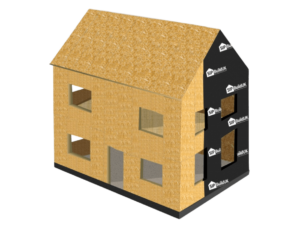
SIPs deliver outstanding U-values and excellent airtightness. The result? A thermally stable envelope that slows both heat gain in summer and heat loss in winter. While Part O focuses on preventing overheating, SIPs help maintain internal comfort passively—minimising the need for mechanical cooling.
Ideal for Passive Cooling Strategies
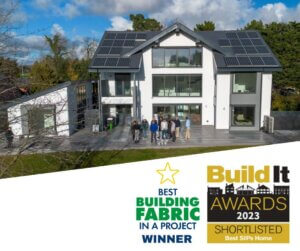 Because SIP structures are airtight and consistent, they’re highly compatible with key passive cooling techniques. We regularly work with designers to integrate:
Because SIP structures are airtight and consistent, they’re highly compatible with key passive cooling techniques. We regularly work with designers to integrate:
• Effective cross-ventilation layouts
• Night-time purging strategies
• External shading (e.g. brise soleil, deep overhangs, blinds)
These passive measures are essential for Part O compliance—and SIPs support their performance through precise, predictable detailing.
Reduced Thermal Bridging Risk

Overheating hotspots often occur around poorly insulated junctions. SIPs are precision-manufactured with fewer thermal weak points, reducing the risk of temperature build-up at windows, doors, and roof connections. This leads to a more balanced, comfortable internal environment throughout the day.
Easier Compliance Modelling
Part O compliance can be approached via:
• The simplified method – looking at glazing ratios, cross-ventilation, and orientation
• Or dynamic thermal modelling – for a more flexible, performance-based approach
Thanks to their repeatability and thermal consistency, SIPs perform well under dynamic simulation and support smoother compliance at the design stage.
Final Thought
SIPs don’t guarantee compliance—but they give your design team a significant advantage over traditional methods. The key? Early-stage collaboration.
Engage with us at RIBA Stage 3 and we’ll help integrate SIP-specific strategies to deliver on Part O from the outset.
Need expert support on Part O and SIP integration?
Book a technical call or speak to our design team directly—we’re here to help make your planning and compliance processes smoother.
👉 Call 01977 520 902 or Book a Consultation
Design smarter. Build cooler. Stay compliant with SIPs.
Sap 10 future homes standard 2025 low thermal mass
The use of SIPs now has a proven track record in the delivery of high performance, thermally efficient dwellings. Historically this was advantageous for our self-build clients that wanted to exceed regulations to drive down energy bills in their forever homes.
However, with regulations under Part L and SAP 10 becoming increasingly stringent the use of SIPs removes variables and provides a streamlined route to compliance for all.
Q&A’s
Why do SIPs systems make this process easier for the client?
As building regulations continue to become more stringent, especially with amendments to Part L and now SAP10 as we move toward the 2025 future homes standard, the use of SIPs has huge benefits to all to ensure that compliance is achieved.
Being able to guarantee U values, provide thermal bridging details and help toward ensuring air pressure test results at early design stage allows all clients to accurately cost for the overall energy performance of their build or development.
Using back stop U values, Accredited Construction Details (ACD’s) and default Thermal Bridging (PSI) Values is no longer compliant so ensuring the overall energy performance of the build is achieving your requirements at the earliest stage is the best way to avoid further costs and delays to projects.
Can you expand on this regarding the U values, air pressure tests and thermal bridging – are your SIP panels compliant with current U Value Requirements?
All projects must achieve certain U values to comply with current regulations. This is currently 0.18 in walls and 0.11 in the roof when looking at the target fabric energy efficiency of a dwelling.
However, depending on how the project is performing overall when considering additional measures such as Solar PV, Air Source heat pumps and MVHR it may be that the roof can be delivered at 0.13. Again, early modelling of the dwelling helps to confirm this which again shows the commercial advantage to having this done.
With our SIP systems we can complete U value calculations at the earliest possible stage to ensure we are achieving the required targets. With our SIP systems we are achieving these targets with the thinnest overall construction depths possible which maximises habitable or rentable space internally for the client.
Our range of SIP panels provide options as low as 0.11 in wall applications and 0.13 in roof applications depending on a project’s external finishes. SIP Panel Range
Along with U values, what is the importance of the Air Pressure testing?
There is no point delivering fantastic U values with poor air pressure test results! SIPs systems are inherently airtight given the accuracy of design, manufacture and install so our systems will often exceed current air pressure test requirements without additional measures. Obviously follow on trades must ensure they are sealing appropriately too around any penetrations made!
A significant change to the new regulations is that all plots on multiple unit developments must be air tested – even if they are the same house type. For developers, the worry of how each dwelling will perform can be eliminated when using SIPs which again reduces variables and potential costs if additional measures are needed due failed air pressure tests.
Our SIP systems also have minimal shrinkage and settlement in comparison to standard timber frame so this ensures air pressure test results are maintained through the lifetime of the building. This combined with reduced timber content in external walls also ensures that thermal bridging is kept to a minimum.
This leads nicely onto thermal bridging – what has changed under new regulations?
 Default PSI values can no longer be used as this has a negative impact on fabric energy efficiency results, often leading to failure to comply.
Default PSI values can no longer be used as this has a negative impact on fabric energy efficiency results, often leading to failure to comply.
Our SIP systems are complete with Pre calculated PSI values that can be sent to your SAP assessor along with the U value calculations we complete for you so the building fabric can be modelled at the earliest possible stage. This can then help to determine how your other potential measures such as MVHR, Solar PV, UFH and Air Source Heat Pumps will be incorporated.
This has certainly made the target fabric energy efficiency of the building a vital step in achieving SAP10 compliance.
Absolutely. The majority of our clients are looking to deliver thermally efficient, sustainable systems on time and on budget.
 When you combine the predictability of cost, program time and thermally efficiency of our systems we are ultimately part of the process in providing our clients with a streamlined route to compliance at the earliest possible stage which further reduces variables and risk whilst on site.
When you combine the predictability of cost, program time and thermally efficiency of our systems we are ultimately part of the process in providing our clients with a streamlined route to compliance at the earliest possible stage which further reduces variables and risk whilst on site.
The ability to ensure that a building will achieve the required energy ratings whilst still in design stage allows for all additional measures such as MVHR, UFH and Solar PV to be factored into the design and engineering process of our SIPs system.
As building regulations become more onerous under Part L and SAP10 and the demand for responsibly sourced, sustainable systems increases our BBA approved SIP panels and Structural Timber Association Gold standard certification ensures we are perfectly placed to meet the demands of our growing client base.
What are the differences between SIPs and Timber Frame?
As a business we are often asked what the differentials are between SIP and Pre-Insulated Timber Frame systems. Offering both products we have tried to give a transparent answer to this covering as many parameters as we can.
The aim is not to disparage one or the other, simply to highlight the differentials between the two so that we can try and aid you in your choice of frame.
Thermal Performance
The use of our BBA approved PUR core SIP panels allow for lower U values to be achieved off the shelf when compared to standard timber frames. The use of SIPs really does come into its own as you look to achieve low U Values while minimising overall construction depth. SIP’s can remove the requirement for additional layers of insulation to be used, reducing on site program, labour and cost.
SIPs should also come with a full suite of pre calculated PSI values to aid in the fabric thermal performance calculations through SAP10. If not available, the client must either pay for them for that project or back stop values must be used which are detrimental to the fabrics thermal performance calculations and can result in a failure of compliance.

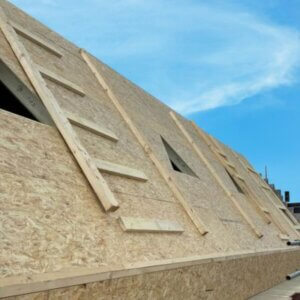
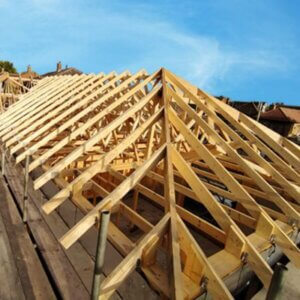
With a SIP having no repeat studwork within the panel itself, you have far less thermal bridging to contend with when compared to standard timber frame systems. Furthermore, where SIP systems do not require a structural element at the panel joint, insulated spline joints can be used to further reduce bridging and maximise the continuity of insulation around the envelope of the building.
This combined with the precision manufacturing process of SIPs systems can also ensure fantastic air pressure test results confirming the fabric first efficiencies of a SIP structure.
This leads us nicely onto structure..
Structure
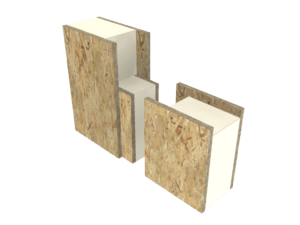

A SIP panel is a fully insulated panel consisting of a PUR core and OSB facings to either side. It has no timber studwork within as the panel itself is a structural element. Additional structure such as steels / glulam will be used as per the engineering requirements of the project which should be engineered and included for by your SIP provider.
Timber Frame panels (open or closed) will have repeat studwork as this is required for the structural integrity of the system. They then also require the additional structure as mentioned above, again, as per the engineering requirements of the project.
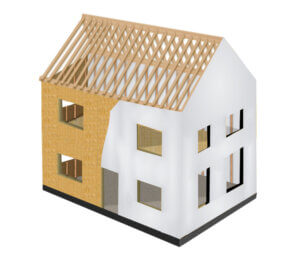


The use of a SIP roof really excels where habitable roof space or vaulted ceilings are required. Again, extremely low U values can be achieved off the shelf and with the SIP panel installed it allows follow on trades to work internally and externally immediately.
The SIP roof panels depending on roof design will be supported by ridge beam and potentially mid span purlins if needed, this should all be part of the SIP providers design and engineering package.
If a pre-insulated timber system is used, this would usually incorporate a more traditional trussed roof product which requires insulating by follow on trades meaning the project is open to the elements for longer. If a SIP system simply requires a trusses roof, this is no problem and hybrid systems such as this are completed regularly.
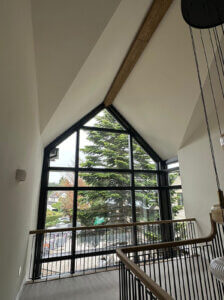 Other loose cut roof systems can be used to create a vaulted aesthetic with timber frame, however, for this application the SIP system and roof is certainly advantageous.
Other loose cut roof systems can be used to create a vaulted aesthetic with timber frame, however, for this application the SIP system and roof is certainly advantageous.
One of the main structural differentials between the two products is the degree of settlement that needs to be considered. With Timber Frame, an allowance of 15mm of settlement must be included in engineering. The SIP panel is dimensionally stable so an allowance of only 2mm is required.
Over a 3-storey building this is 45mm in Timber Frame against only 6mm in SIPs. This allows for SIPs to work perfectly with lightweight finishes such as render boards and render and certainly removes the amount of potential snagging required later down the line with a standard frame system. This also helps to ensure that over the lifetime of the building the as built performance is maintained with a SIP solution.
Cost
Ultimately, a standard timber frame may often be less expensive than a SIP system. A SIP system is a high-end solution that is superior in quality both structurally and thermally than a standard Timber Frame Product.
However, if you are simply looking to achieve regulations and build quickly while minimising cost a pre insulated timber frame may be the right choice for you. As a business we regularly offer both SIP and Pre-Insulated timber fame solutions to our clients to ensure that we are able to cover all options during early conversations.
Program
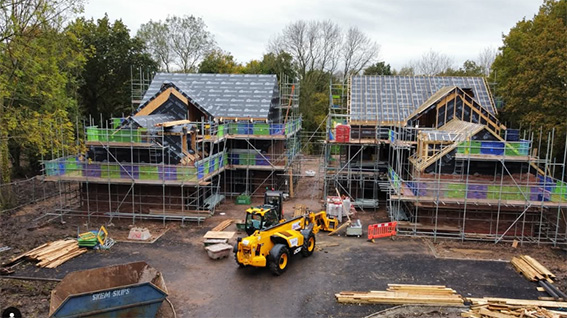
While both are far quicker than traditional construction, SIPs in certain situations can still maintain advantages.
If a SIP roof is being utilised, follow on trades can work internally and externally at the same time, reducing overall program. This system also provides a relatively weather tight building as soon as the SIP install is complete.
Windows and doors are also regularly ordered off plan as the SIP will be manufactured and installed to minimal tolerances, again improving program.
The predictability of program for both systems is again extremely attractive when compared to traditional methods as the systems are installed quickly and accurately in conditions where more traditional methods may have to stop. For any project both systems help to minimise risk of variables and delays to programs which often then incur cost.
Accreditation
With both systems we would suggest it is vital that you engage with a Gold Standard Member of the Structural Timber Association. If a closed panel timber frame or SIP is being used it is also paramount that the product carries 3rd Party Accreditation such as a BBA Certificate. Your provider should also carry ISO9001 and product specific fire test data proving both 30 minutes and 60 minutes have been achieved to the new EN1365-1 Fire Test Standard.
These documents are essential when it comes to streamlining compliance with building control, warranty providers, lenders and the council of mortgage lenders. If this information is not available in the current market…. Why not!!
In support of this, the SIP system that we offer also includes…
- NHBC Accept
- System approval for Premier Guarantee / LABC
- Standard Construction Details
- Acoustic performance data
- Pre calculated PSI Values
We hope this information is helpful and our team is here to discuss your options further.
Why Build with SIPs instead of traditional construction methods
What a question!
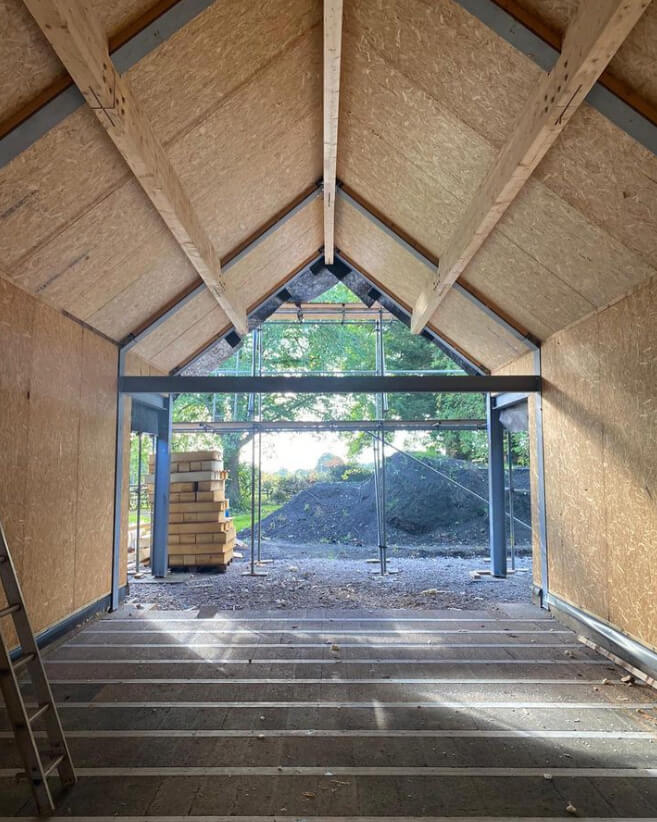 Certainly one that cannot be answered in just a paragraph as many of our clients choose SIPs for a number of different reasons.
Certainly one that cannot be answered in just a paragraph as many of our clients choose SIPs for a number of different reasons.
However, with over a decade of delivering SIPs systems the main reasons for utilising SIPs are found below. Some clients will choose SIPs for just one or two reason, others may choose SIPs because of them all. It all depends on the main drivers for your project and what is important to you. We will also include links to our website to these subject areas where further information can be found.
Energy Efficiency: The use of a complete SIP structure ensures that the building has the best possible chance of being extremely energy efficient as this fabric first approach can deliver very low U values and fantastic air pressure tests off the shelf!
With additional renewables such as Solar PV, Air Source Heat Pumps (ASHP) Mechanical Ventilation with Heat Recovery (MVHR) and Under Floor Heating (UFH) often being required to meet Building Regulations under Part L, the thermal efficiency of the SIP structure allows these additional products to work as efficiently as possible which ultimately reduces energy consumption and bills!
All of this with the additional benefit that the use of an appropriately accredited and Certified SIP panel with PUR core will deliver the lowest U values while maximising the habitable space internally as it offers the thinnest overall construction depth possible. More information on certification and accreditation can be found here – this is vital for Building Control, Building warranties and mortgages. SIPs Finance Warranties and Accreditations – SIP Build UK
Building with a poor performing fabric requires more energy output to maintain heat which ultimately increases the cost! Buildings with a poor fabric also reduce the efficiency of the additional renewables mentioned above as they have to work harder / longer to maintain the internal target temperature.
More information can be found here under the SAP 10 & Future Homes Standard sub heading SIPs Technical and Frequently Asked Questions – SIP Build UK
Faster & More Predictable Construction Time:
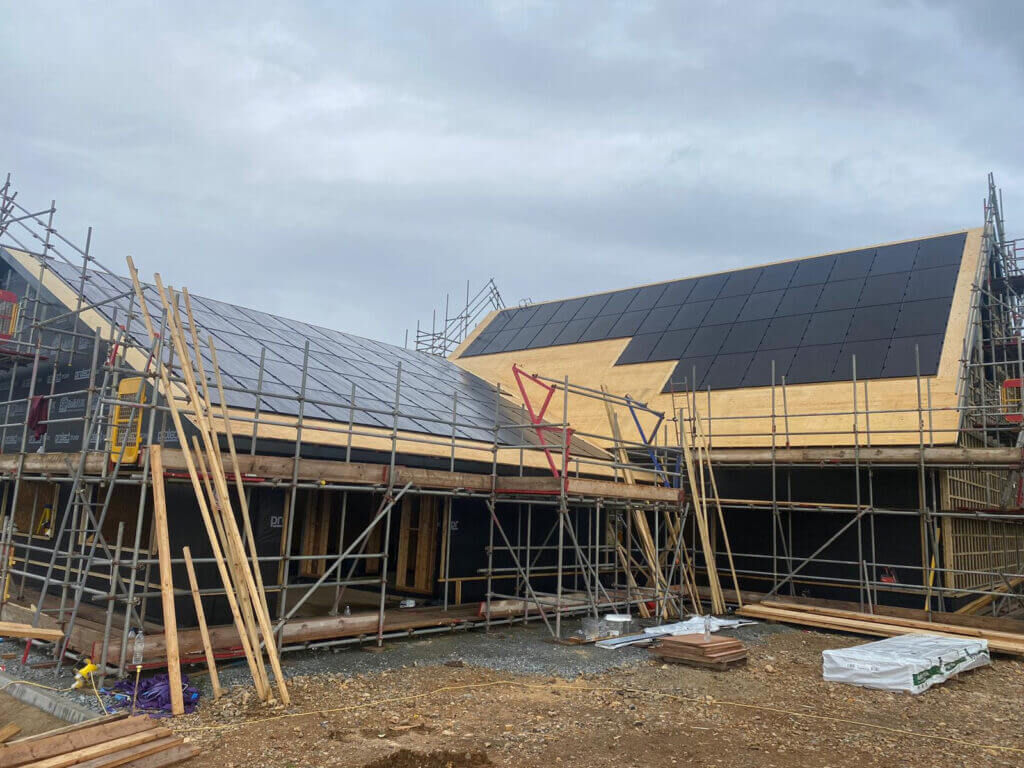 A 172mm SIPs panel will achieve a u value of 0.16[/caption]
A 172mm SIPs panel will achieve a u value of 0.16[/caption]
This is a huge driver for all of our clients in all sectors. Be it the Self Builder, Main Contractor, Housing Association or Developer as building with SIPs is far quicker than more traditional methods.
A faster and more predictable program time on site ultimately reduces cost, variables and therefore Risk. Understanding this program time at the earliest possible stage allows many clients to borrow funds over a far shorter period which massively reduces the interest paid – for our developer clients this is a huge benefit!
The predictability of a SIP install also allows for follow on trades to be scheduled around the SIP program which is hugely beneficial to the overall program time of the project. SIP systems also remove the external finished from the critical path which allows follow on trades to work internally much quicker. With minimal disruption to install due to rain and temperature SIPs offers far less risk to program than more traditional methods too.
With the system being designed, signed off and then fabricated prior to delivery on site, the on-site issues / mistakes associated with more traditional methods are also minimal as the kit being installed is a precision engineered system.
Sustainability:
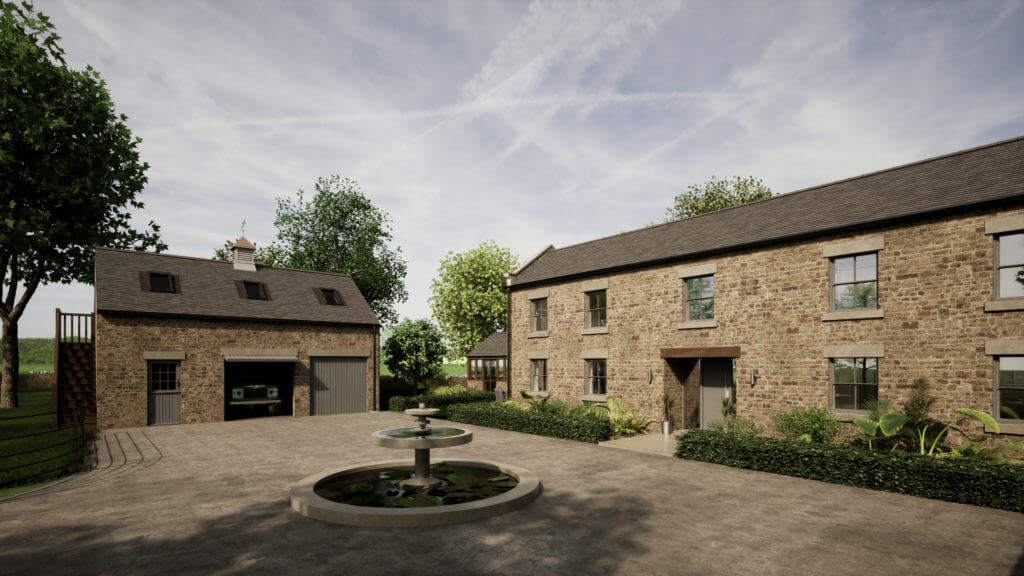 Clients are now increasingly aware of the environment in their decision making and method of construction is often high on the agenda. Not only do clients want to reduce their energy bills which also lowers the carbon footprint, they also want to build with a sustainable system too.
Clients are now increasingly aware of the environment in their decision making and method of construction is often high on the agenda. Not only do clients want to reduce their energy bills which also lowers the carbon footprint, they also want to build with a sustainable system too.
The use of an appropriately accredited SIP panel ( as is the panel we use) will have full certification for a rigid thermoset PUR core with zero ozone depletion along with OSB/3 facings that are PEFC / FSC responsibly sourced. All additional timbers that are used in conjunction with the SIP panel to provide the engineered system will also be responsibly sourced and appropriately treated (where required) and will align with the BBA certification for the SIP panel. Further information on BBA certification can be found within this link. SIPs Finance Warranties and Accreditations – SIP Build UK
Sustainability is often high on the agenda for many sectors now with Education, Affordable Housing and Residential Development projects often having sustainability criteria that must be achieved. Many SIP systems will provide a huge step toward achieving these criteria with accreditation such as BREEAM A+ ratings
One Point of Contact:
Often underestimated but one of the key drivers for our repeat clients and certainly one that massively benefits the self-builder that is busy working alongside their build.
Our suggestion would be that your SIP provider is taking complete responsibility for the design, engineering and installation on site of the complete system. This would include SIP externals, all internal walls (load bearing and non load bearing), all intermediate floors (metal open web joists and weather board) and all additional structure such as steels / glulam where required for the frame. All cranage should also be included.
This removes a huge amount of variables (risk) and communication with various companies / contractors. From a warranty perspective, a fully designed, engineered and installed solution by the SIP provider is often also preferred.
Paying a company to design, engineer and supply and then another to install can often lead to issues and delays on site if either party have a problem.
One company taking responsibility is more secure and ensures that if any issues do arise that they are resolved prior to the contract being completed.
The customer Journey at the following link gives an example of the process. SIPs Timings and Process – SIP Build UK
Conclusion:
SIPs offer numerous advantages over traditional construction methods, especially in terms of energy efficiency, speed of construction, sustainability and streamlining of a process.
The key part to this process is engaging with a SIP provider early to ensure that they along with your architect understand exactly what you want to achieve for the project so that they can offer potential solutions based on the panel sizes that they offer.
A large amount of information about the use of SIPs can be found here Structural Insulated Panels – SIP Panels – SIP Build UK
If you have any further questions please speak to the team on 01977 520 902.
What is a Mechanical Ventilation with Heat Recovery (MVHR) system?
A Mechanical Ventilation with Heat Recovery (MVHR) system is a whole-house ventilation system that both extracts stale air from inside a building and supplies fresh air from outside — all while retaining most of the heat from the air that’s being expelled. It’s especially well-suited for airtight, energy-efficient homes, like those built using SIPs (Structurally Insulated Panels), which naturally retain heat but need controlled ventilation to ensure indoor air quality.
Let’s explore this in detail, particularly in the context of UK homes using SIP construction.
What is an MVHR System?
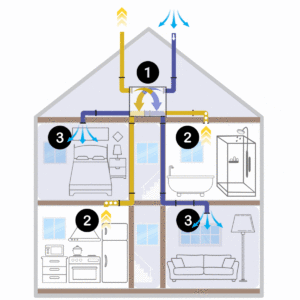 At its core, an MVHR system is a balanced ventilation system with heat exchange . It consists of:
At its core, an MVHR system is a balanced ventilation system with heat exchange . It consists of:
- A central unit (usually installed in a utility room, loft, or plant room) diagram 1
- A network of ducts running through the house
- Extract grilles in “wet rooms” (kitchens, bathrooms, utility rooms)
- Supply grilles in habitable rooms (living rooms, bedrooms, offices)
- A heat exchanger inside the unit
Rather than simply sucking air out like a bathroom fan, MVHR uses two airstreams:
- Warm, stale air is extracted from the house (from places like kitchens and bathrooms). Diagram 2
- Cool, fresh air is brought in from outside. Diagram 3
Inside the unit, a heat exchanger transfers up to 90–95% of the heat from the outgoing stale air to the incoming fresh air — without mixing the airstreams. This means you get fresh air, but not the cold .
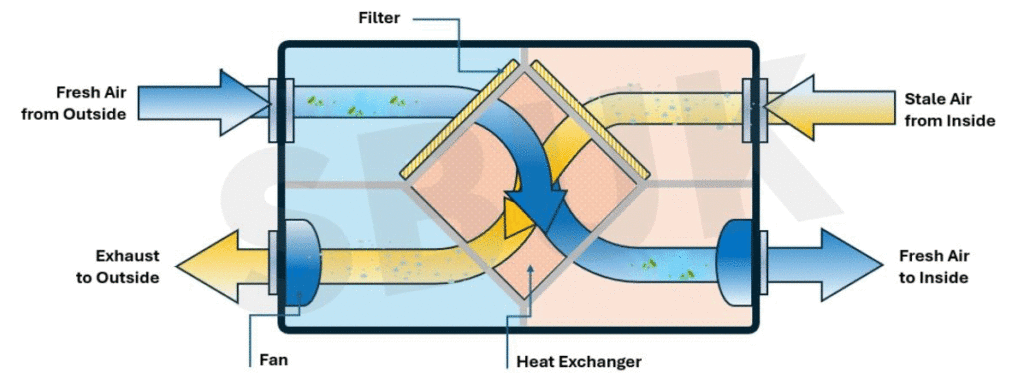
How Does MVHR Work in a SIP-Constructed House in the UK?
 SIP homes are inherently airtight and very well insulated, which makes them ideal candidates for MVHR. In fact, in highly airtight homes (typically with air leakage <3 m³/h·m² @ 50Pa, as measured by a blower door test), some form of mechanical ventilation becomes essential — because natural air leakage isn’t enough to maintain healthy indoor air quality.
SIP homes are inherently airtight and very well insulated, which makes them ideal candidates for MVHR. In fact, in highly airtight homes (typically with air leakage <3 m³/h·m² @ 50Pa, as measured by a blower door test), some form of mechanical ventilation becomes essential — because natural air leakage isn’t enough to maintain healthy indoor air quality.
Here’s how MVHR complements a SIP structure in the UK context:
- Airtightness Enables Efficiency
SIPs have few joints and can be sealed with tapes and foams, creating a nearly airtight shell. This means the MVHR system doesn’t have to work as hard to maintain balanced airflow, and the heat recovery process becomes highly efficient — unlike in a draughty brick-and-block home where air loss undermines the system.
- Maintains Indoor Air Quality
Airtight homes without ventilation, humidity, CO₂, VOCs, and airborne pollutants can quickly build up. An MVHR constantly refreshes indoor air without the energy penalty of opening windows, which is especially useful during UK winters or in noisy urban areas.
- Energy Efficiency
In traditional UK homes, opening windows or using extractor fans means losing expensive heat. In a SIP home  with MVHR, you retain most of that heat while keeping the air fresh. This helps SIP buildings easily meet or exceed Part L of the Building Regulations and significantly improves SAP scores and EPC ratings.
with MVHR, you retain most of that heat while keeping the air fresh. This helps SIP buildings easily meet or exceed Part L of the Building Regulations and significantly improves SAP scores and EPC ratings.
- Even Heat Distribution
MVHR can help balance temperatures across different rooms, eliminating cold spots – especially valuable in open-plan SIP homes where airflow might otherwise stagnate.
Installation Considerations in a SIP House
Installing MVHR in a SIP-constructed home requires good coordination between the builder, the SIP supplier, and the MVHR designer. Some key considerations include:
- Duct routes should be planned early in conjunction with the SIP design.
- A service void (battened zone) is often included behind the plasterboard to accommodate ducts and cables.
- Ceiling voids and floor zones are also used to run the main ductwork.
- All penetrations through the SIP envelope must be airtight and sealed to maintain the building’s integrity.
Often, MVHR ductwork is hidden within ceiling voids, stairwells, or even built-in furniture to preserve aesthetics.
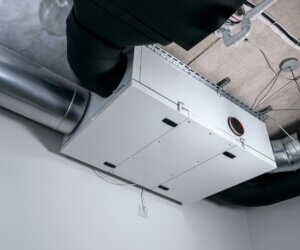
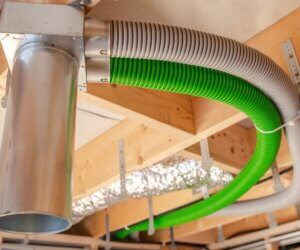
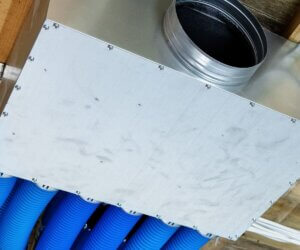
Benefits of MVHR in UK SIP Homes
- Lower heating bills – retains up to 95% of heat that would otherwise be lost
- Improved air quality – filters pollen, dust, and pollutants from incoming air
- Less condensation and mould – keeps humidity levels balanced
- Quiet, draught-free living – no need to open windows for fresh air
- Ideal for modern, energy-efficient builds – particularly for Passive House or Net Zero designs
Common Misunderstandings
- MVHR is not air conditioning – it doesn’t heat or cool the air, only recovers heat.
- It does not increase energy use – it actually reduces overall heating demand.
- It is not optional in airtight homes – it becomes essential for air quality and compliance.
Summary
 In the context of SIP homes in the UK, an MVHR system is not just compatible — it’s often the ideal ventilation solution. The airtight and insulated nature of SIP construction means that traditional ventilation methods are inadequate and inefficient. MVHR systems provide fresh, filtered air throughout the year without losing heat, making them perfectly suited for homes that aim for low energy use, thermal comfort, and compliance with modern building standards.
In the context of SIP homes in the UK, an MVHR system is not just compatible — it’s often the ideal ventilation solution. The airtight and insulated nature of SIP construction means that traditional ventilation methods are inadequate and inefficient. MVHR systems provide fresh, filtered air throughout the year without losing heat, making them perfectly suited for homes that aim for low energy use, thermal comfort, and compliance with modern building standards.
Would you like to see a diagram of how MVHR is typically installed in a SIP home, or get an example layout? Click here
SIP Extensions
SIPs are not limited to just new build houses; they can indeed be used for extensions. SIPs are a versatile building material known for their energy efficiency, strength, and quick installation time. Here are some points to consider when using SIPs for building extensions:
 Compatibility with Existing Structures: SIPs can be designed to integrate with existing buildings. However, it’s essential to ensure that the new extension is structurally compatible with the existing building. This may involve consulting with a structural engineer or an architect. Through experience we have found that the better the existing building survey is the smoother the project runs. A precision-engineered building joining to an older traditionally built structure will have a few peculiarities! To date we have yet to find an existing structure that we can’t join a new SIP structure too, however the devil is in the detail and the completion of a survey is a huge step in the right direction.
Compatibility with Existing Structures: SIPs can be designed to integrate with existing buildings. However, it’s essential to ensure that the new extension is structurally compatible with the existing building. This may involve consulting with a structural engineer or an architect. Through experience we have found that the better the existing building survey is the smoother the project runs. A precision-engineered building joining to an older traditionally built structure will have a few peculiarities! To date we have yet to find an existing structure that we can’t join a new SIP structure too, however the devil is in the detail and the completion of a survey is a huge step in the right direction.
Energy Efficiency: One of the key advantages of SIPs is their high thermal efficiency, however, thought must be given to the original building. Just because you end up with a shiny new high-performance part of the building, the huge benefits gained will dissipate very quickly if the existing building is not brought to a similar standard or the new extension cannot be compartmentalised internally to provide a new thermally efficient living area.
SIP panels also provide superb thermal efficiency while minimising the overall construction depth of wall build-ups – this can be a huge benefit to the homeowner that is looking to maximise the habitable space they can have with an extension.
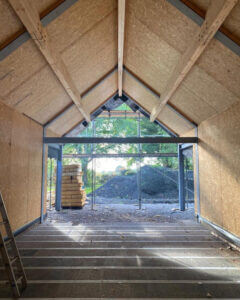 Speed of Construction: SIPs can significantly speed up the construction process because they come as pre-fabricated panels. This can be a big advantage if you want to minimize disruption during the extension process. Achieving a weathertight structure quickly onsite allows for a reduction in site dust and disruption to the rest of the home.
Speed of Construction: SIPs can significantly speed up the construction process because they come as pre-fabricated panels. This can be a big advantage if you want to minimize disruption during the extension process. Achieving a weathertight structure quickly onsite allows for a reduction in site dust and disruption to the rest of the home.
Building Regulations and Planning Permission: Depending on your location, you’ll need to ensure that your extension with SIPs complies with local building regulations and planning permissions.
Cost Considerations: SIPs can be more expensive upfront compared to traditional building methods, however they can offer long-term savings through energy efficiency and reduced construction time. The cost savings due to improved speed on site may be less on smaller extensions than on larger self-build or residential projects so this must be a consideration.
Many SIP companies start with small extensions as they can offer more of a turnkey project approach which can be highly desirable for the homeowner. Caution must be shown as smaller new businesses often require higher upfront payments which may put the homeowner at risk. This can often be coupled with the lack of required accreditations and certifications so due diligence should be completed. We recommend this with any size of SIP project!!
Due to years of experience, we understand that the need for an extension comes down to a small number of factors.
The need for space is a given but often moving to a larger home just isn’t financially viable. Secondly you love your location and don’t want to move (but could afford to) and finally you buy a smaller house with the intention to add an extension to it. The first instance which is generally budget-driven may not always be suitable for a SIP extension as a Timber Frame option would be beneficial from a budget point of view. Click here for Framebuild enquiry form /site
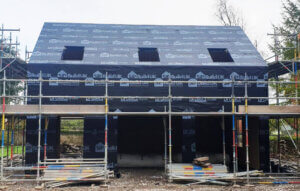 Where performance or speed of build is the driver SIP extensions can be very effective. As a guide anything over 65/70m2 in size starts to become cost effective using SIPs – if the walls are SIPs and not all glazing!
Where performance or speed of build is the driver SIP extensions can be very effective. As a guide anything over 65/70m2 in size starts to become cost effective using SIPs – if the walls are SIPs and not all glazing!
In summary we have built many extensions over the last decade however we have also declined to price many as they are simply too small to benefit from the speed, thermal performance and precision that SIPs deliver. If you are going out, up or both we can look at your proposed project and offer our opinion on the suitability of it and provide an estimate if it is suitable.
Remember Glass = Structure, Structure = Cost.
Compact and challenging Building Plots
Plot selection is a critical part of any house building project. The characteristics of the plot significantly influence the design, construction and overall feasibility of the project. Here are some key points to consider:
- Size and Shape: The size and shape of plot determine the maximum footprint and layout of the building. It also influences factors such as setbacks, green space, and the potential for future expansions.
- Orientation: The orientation of the plot with respect to the sun and prevailing winds can impact on energy efficiency and comfort within the dwelling. Proper orientation allows for better utilisation of natural light and can contribute to passive heating and cooling strategies.
- Legal and Regulatory Constraints: Local zoning regulations, building regulations and other legal constraints may dictate what can and cannot be built on a particular plot. For example, building in a conservation area could be considerably more restrictive than an area designated for homes or even self build sites where unique designs are positively encouraged!
- Topography and Soil Conditions: The topography of the land and soil conditions affect the foundation design and construction methods. Steep slopes may require special considerations (Rock sockets, digging out of bedrock etc) and different soils may have varying bearing capacities. Conditions with lots of clay may need the foundations to be piled – has the budget included for this?
- Utilities and Infrastructure: Access to essential utilities such as water, electricity, and sewage systems is crucial. The availability and proximity of infrastructure can impact the overall cost and feasibility of the project. Please also factor in the frustration and cost when dealing with the utility providers!!!!
- Environmental Considerations: The plot’s surroundings and local ecosystem should be considered to minimize the environmental impact of the construction. We have seen a variety of wildlife impact the build process on site for example (but by no means the full list) has the site got bats, Great Crested Newts, Slow Worms or Badger sets?! All of these have stopped sites we have been involved with at some stage!
- Budget and Financial Considerations: The cost of the plot itself, as well as any necessary site preparation, should be factored into the overall budget of the project. Understanding the financial implications of the chosen plot is crucial for a successful project.
Once all the above is considered we then get to the heart of the matter!
You have found your plot, purchased it and appointed an architect – BUT will the site and access to it let you build the home you are dreaming of!!
Do not worry! We have built SIP superstructures in some of the most awkward and inhospitable of places. Our experienced operations team have helped build down alleyways, on top of hills, down tiny country tracks and on the top of existing buildings. Rear gardens, between two existing buildings and even party walls in London with single side access to name just a few! We have yet to find somewhere that we could not find a solution for (not that this is a challenge or gauntlet we are throwing down!)
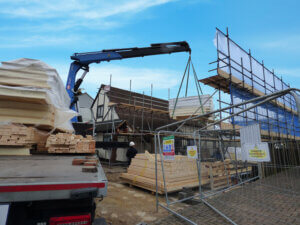

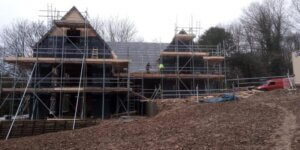
Derbyshire Longhouse
Built on a remote, sloping site with complex logistics, this striking longhouse showcases the adaptability of SIPs in challenging environments.
👉 View the Case Study ›
Driffield Residential Development
Completed in just 2 weeks on a tight-access site, this SIP build proves that limited space doesn’t mean limited performance.
🎥 Timelapse available to view.
👉 View the Case Study ›

